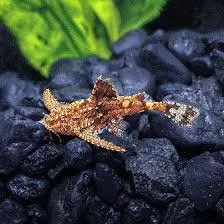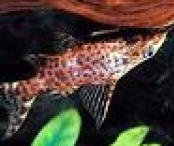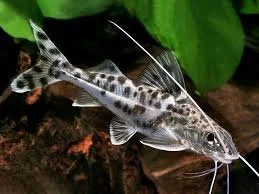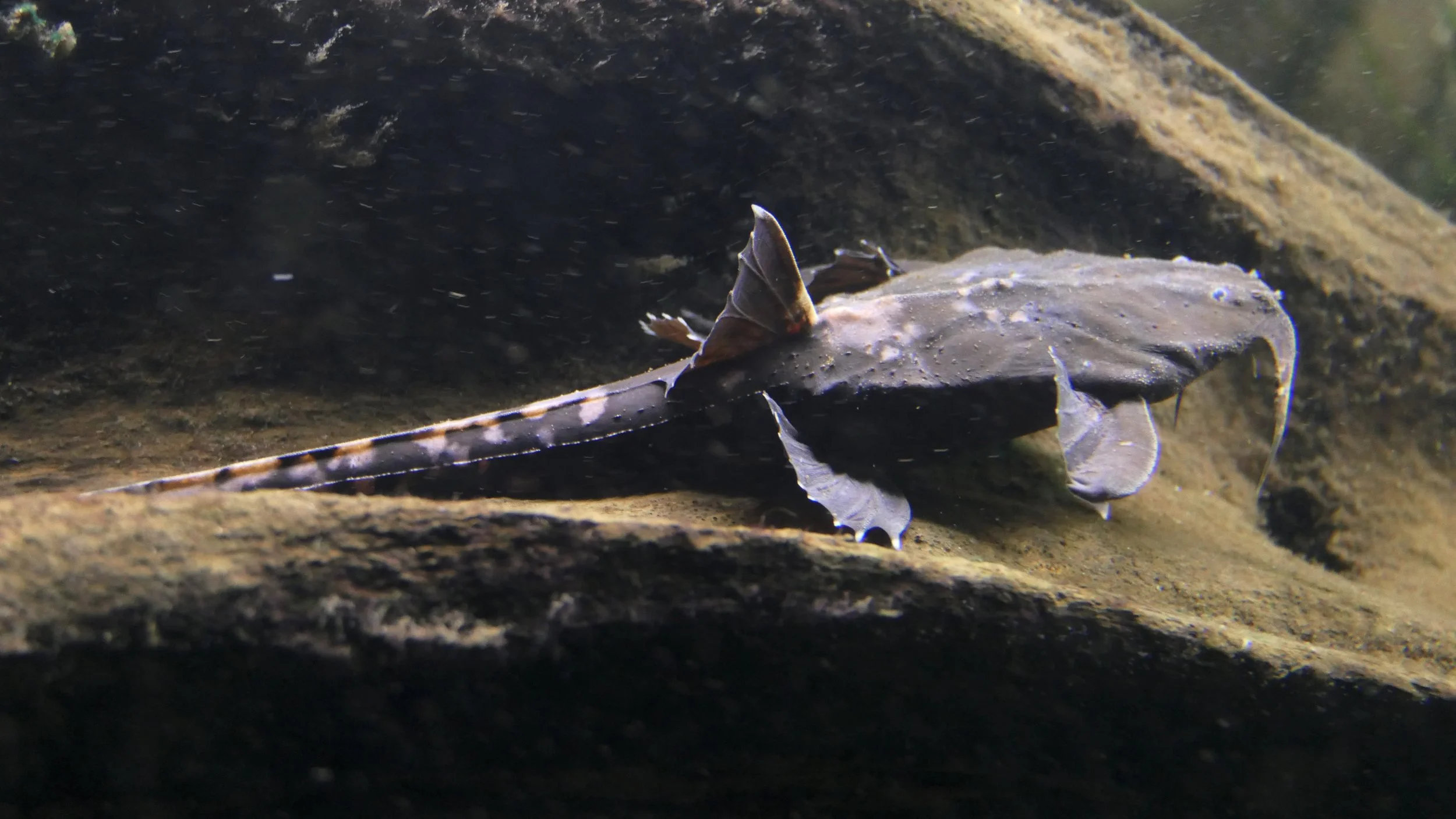 Image 1 of 1
Image 1 of 1


Catfish- Glass
Glass catfish (Kryptopterus vitreolus), also known as ghost catfish or glass cat, are unique and fascinating freshwater fish prized for their transparent appearance. Here's some information on their care:
Origin: Glass catfish are native to Southeast Asia, particularly Thailand, Malaysia, and Indonesia. They inhabit slow-moving rivers and streams with dense vegetation.
Appearance: As their name suggests, glass catfish have a translucent body that allows you to see their internal organs, including their skeleton and digestive tract. They have a slender, elongated body with a forked tail fin. Their fins are typically colorless or have a faint pinkish hue.
Size: Glass catfish can grow up to 4-5 inches (10-12 cm) in length when fully mature.
Tank Requirements: Due to their delicate nature, glass catfish require a well-established aquarium with stable water parameters. A tank size of at least 20 gallons (around 75 liters) is recommended to provide them with ample swimming space. They prefer soft to moderately hard water with a slightly acidic to neutral pH (6.0-7.5) and a temperature range of 75-80°F (24-27°C). Provide plenty of plants, driftwood, and hiding spots to help them feel secure.
Diet: Glass catfish are primarily nocturnal and prefer to feed during the evening or night. They are omnivorous and will accept a variety of foods, including high-quality pellets, flakes, freeze-dried foods, and live or frozen foods such as bloodworms, brine shrimp, and daphnia. Offer a varied diet to ensure they receive proper nutrition.
Behavior: Glass catfish are peaceful and shoaling fish, meaning they prefer to be kept in groups of at least six individuals. In smaller groups, they may become stressed and hide more frequently. They are relatively shy and may spend much of their time hiding among plants or other tank decorations, especially during the day.
Tankmates: Glass catfish are compatible with a wide range of peaceful community fish that share similar water parameter requirements. Avoid keeping them with aggressive or overly boisterous species that may stress or harass them. Suitable tankmates include tetras, rasboras, peaceful barbs, dwarf cichlids, and small loaches.
Water Quality: Regular maintenance is essential to ensure optimal water quality for glass catfish. Perform weekly water changes of around 25% to remove accumulated waste and maintain water parameters within acceptable ranges. Use a good filtration system to keep the water clean and well-oxygenated.
Breeding: Breeding glass catfish in captivity is challenging and rarely achieved in home aquariums. In their natural habitat, they typically spawn during the rainy season in flooded areas. Replicating these conditions in captivity can be difficult, and successful breeding usually requires specialized setups and conditions.
By providing appropriate care and a suitable environment, glass catfish can thrive and add a unique touch to a well-maintained aquarium.
Glass catfish (Kryptopterus vitreolus), also known as ghost catfish or glass cat, are unique and fascinating freshwater fish prized for their transparent appearance. Here's some information on their care:
Origin: Glass catfish are native to Southeast Asia, particularly Thailand, Malaysia, and Indonesia. They inhabit slow-moving rivers and streams with dense vegetation.
Appearance: As their name suggests, glass catfish have a translucent body that allows you to see their internal organs, including their skeleton and digestive tract. They have a slender, elongated body with a forked tail fin. Their fins are typically colorless or have a faint pinkish hue.
Size: Glass catfish can grow up to 4-5 inches (10-12 cm) in length when fully mature.
Tank Requirements: Due to their delicate nature, glass catfish require a well-established aquarium with stable water parameters. A tank size of at least 20 gallons (around 75 liters) is recommended to provide them with ample swimming space. They prefer soft to moderately hard water with a slightly acidic to neutral pH (6.0-7.5) and a temperature range of 75-80°F (24-27°C). Provide plenty of plants, driftwood, and hiding spots to help them feel secure.
Diet: Glass catfish are primarily nocturnal and prefer to feed during the evening or night. They are omnivorous and will accept a variety of foods, including high-quality pellets, flakes, freeze-dried foods, and live or frozen foods such as bloodworms, brine shrimp, and daphnia. Offer a varied diet to ensure they receive proper nutrition.
Behavior: Glass catfish are peaceful and shoaling fish, meaning they prefer to be kept in groups of at least six individuals. In smaller groups, they may become stressed and hide more frequently. They are relatively shy and may spend much of their time hiding among plants or other tank decorations, especially during the day.
Tankmates: Glass catfish are compatible with a wide range of peaceful community fish that share similar water parameter requirements. Avoid keeping them with aggressive or overly boisterous species that may stress or harass them. Suitable tankmates include tetras, rasboras, peaceful barbs, dwarf cichlids, and small loaches.
Water Quality: Regular maintenance is essential to ensure optimal water quality for glass catfish. Perform weekly water changes of around 25% to remove accumulated waste and maintain water parameters within acceptable ranges. Use a good filtration system to keep the water clean and well-oxygenated.
Breeding: Breeding glass catfish in captivity is challenging and rarely achieved in home aquariums. In their natural habitat, they typically spawn during the rainy season in flooded areas. Replicating these conditions in captivity can be difficult, and successful breeding usually requires specialized setups and conditions.
By providing appropriate care and a suitable environment, glass catfish can thrive and add a unique touch to a well-maintained aquarium.






